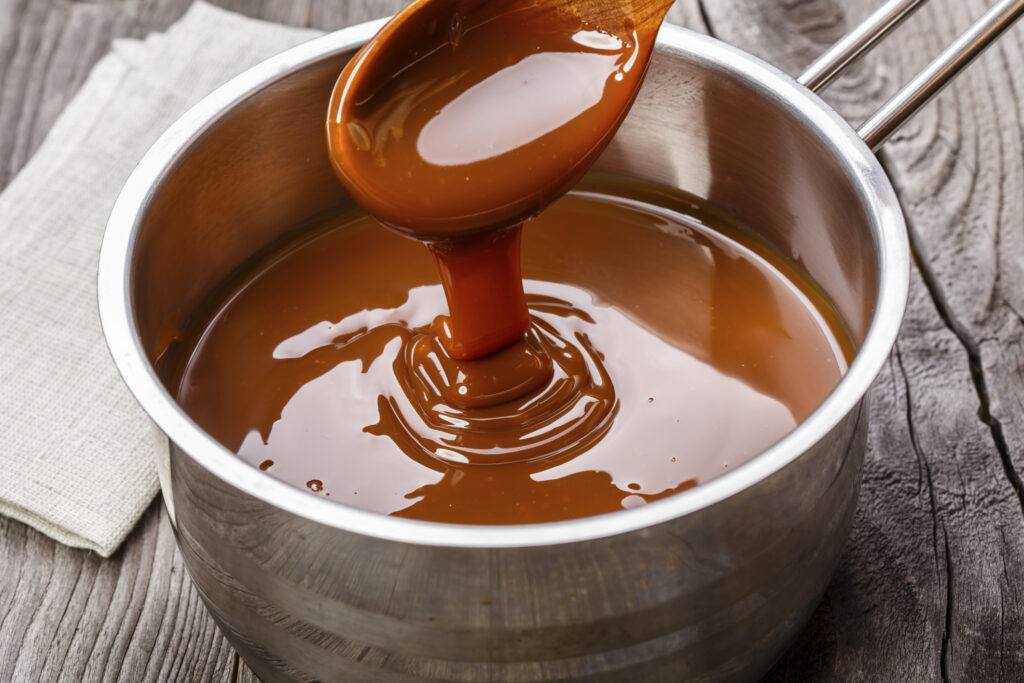Caramelization causes important changes in foods, not only in color but also in flavor.
As no enzymes are involved in the caramelization process, it is a non-enzymatic browning reaction.
It occurs during dry heating and roasting of foods with a high concentration of carbohydrates (sugars).
Simply speaking, it is the process of removal of water from a sugar (such as sucrose or glucose) followed by isomerization and polymerization steps.
In reality, the caramelization process is a complex series of chemical reactions, which is still poorly understood.
Caramelization is the browning of sugars. The browning of sautéed vegetables and the golden color of the bread crust are forms of caramelization.
Gelatinization occurs when starches absorb water and swell. This is a major principle in the thickening of sauces and in the production of bread and pastries.
Acids inhibit gelatinization. A sauce thickened with flour or starch will be thinner if it contains acid.








